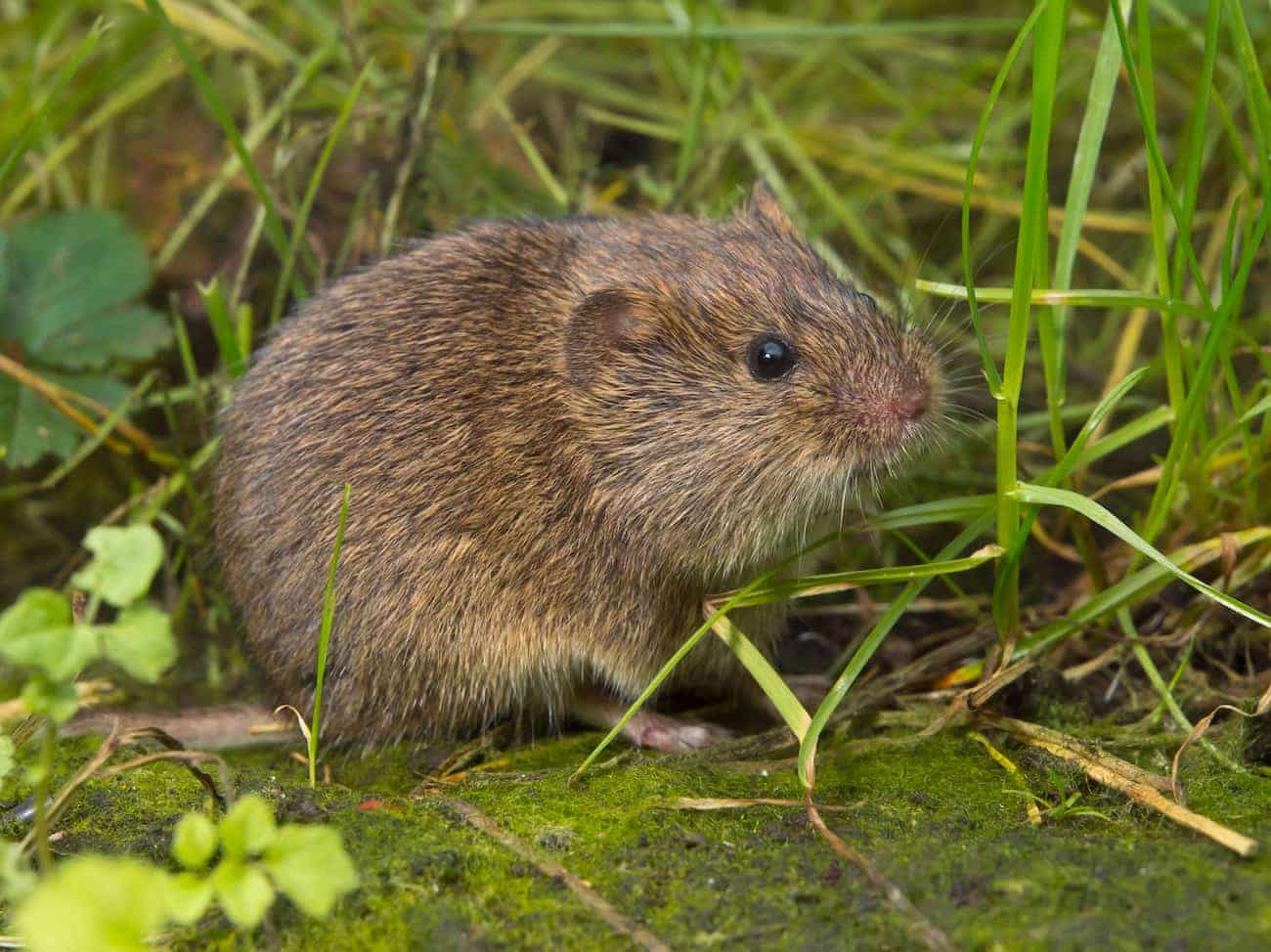Don’t be fooled by how cute a vole’s little face is as they’re actually capable of mass grass destruction. These mouse adjacent rodents tunnel through lawns during the winter in such a way that they can ruin the integrity of the lawn with their tunnels and systems come spring. Though you may think a vole will overwinter like some of its other rodent cousins, voles are typically very active in winter and will eat relentlessly. As we tend to spend more time indoors over winter, we may not notice the activity happening beneath the snow until it reveals itself in the spring. Here are four ways you can avoid winter damage from the pesky little voles!
- Try not to mulch too early or too much! Mulching too early can sometimes cause an increase in vole activity as they’ll make the start of their home under your mulched trees and venture onward as the winter continues. If you mulch before the first frost, this is when voles will tend to move in. Instead, try mulching just after the first frost as most of your young trees and bulbs won’t be damaged. Do your research on what kind of plant and tree life you are mulching to ensure you don’t put your leafy friends at risk! When you do apply the mulch, be sure not to add too much as this can suffocate your roots and give voles even more space to dig tunnel systems. Three inches should do the trick just fine!
- Avoid over-watering! Overwatering before winter can also cause voles to infiltrate your garden or lawn. The waterlogged soil is easier for a vole to work with and they, along with moles, will look for saturated soil to dig into. Be vigilant during heavy or moderate rainfall during the weeks leading to big snowfall as this will create a prime real estate for voles to set up camp and start tunnelling through your front lawn.
- Create barriers! Sometimes the only way to get a vole to quit messing around with your garden or your trees is to place barriers under the earth around what you’re looking to protect. Hardware cloth works wonders against moles and voles alike as they’re not able to get through it. You can use hardware cloth as a lining underneath mulch or lining flower beds and gardens to prevent infiltration underneath the harvest. To protect the trunks of your trees, you can also wrap some hardware cloth around the trunk and under its mulch to stop voles from chewing on the bark.
- Invite predators! Owls, hawks, snakes and cats are some of the voles’ natural predators and it might be the perfect idea to enlist their help against the voles. Before you evict the family of garter snakes that hang out behind your shed, you could leave them be and allow them to be your natural form of pest control. Watch for local birds that roost near your home too so you don’t eliminate their habitat. And then of course there are cats who are incredible hunters and can cut down a vole problem with ease. Just beware that they might try to share their victory meal with you!
In addition to the methods mentioned above, you can use mint and cedar oils as a biodegradable, environmentally friendly vole and mole repellent. Rodents detest mint and spreading mint oil around your lawn will make it a stinky, unsatisfactory landscape. Cedar oil acts as a natural insecticide and without grubs and bugs around, voles will look for other accommodation. If you’d like a pair of expert eyes to help you deduce the possibility of a vole problem, give us a call at (403) 262 -1666 and we’ll get started!



